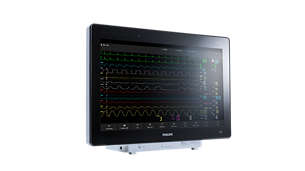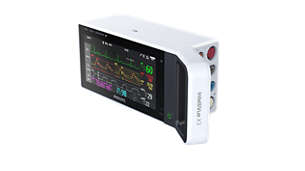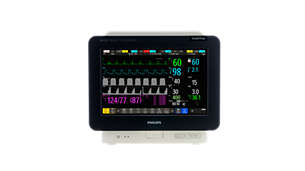Clinical support for blood pressure management and non-invasive blood pressure measurement
The scientific community has called for more training and education on blood pressure (BP) measurement as hemodynamic management continues to be linked to patient outcomes1. Understanding measurement limitations and references, device configuration and patient setup are important factors in obtaining accurate BP measurements.

''Regardless of the method used to measure BP, initial and ongoing training of technicians and healthcare providers and the use of validated and calibrated devices are critical for obtaining accurate BP measurements.'' 2
Blood pressure methodologies
There are three primary methods for measuring blood pressure:
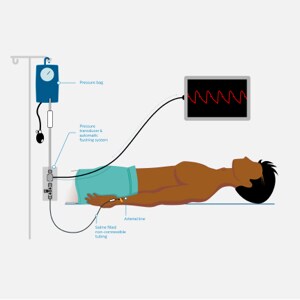
Intra-arterial line
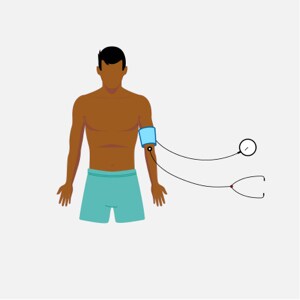
Fully-manual auscultatory
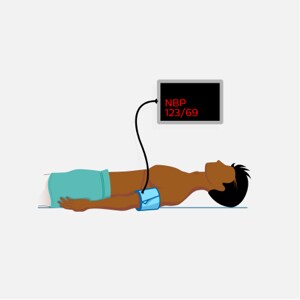
Automated oscillometric
Automated oscillometric NIBP measurement
Philips IntelliVue monitors use the automated oscillometric NIBP technique to measure the systolic, diastolic, and mean arterial pressures. The only direct method for measuring BP is an invasive arterial line. Oscillometric methods estimate blood pressure.
All NIBP oscillometric devices use proprietary algorithms known only to the manufacturer. The algorithms can be modified by the device manufacturer and there are no requirements for such changes to be reported. Therefore, different devices, even from the same manufacturer are not interchangeable. Philips IntelliVue monitors can be configured to be interchangeable by selecting the same reference standard algorithm on all devices.
Application note:
Non-invasive blood pressure principles
Oscillometry has become the preferred method for automated non-invasive blood pressure (NIBP) monitoring3,4 in most clinical settings. It is increasingly used as an alternative to the invasive blood pressure measurement. Studies show that, especially in critical cases (arrhythmia, vasoconstriction, hypertension, shock), oscillometric devices are in general more accurate and consistent than devices using other non-invasive measuring techniques. However, the oscillometric measurement method does have its limitations.
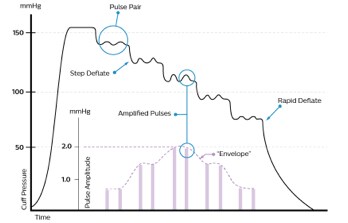
Application note:
Clinical validation of NIBP measurement accuracy
This Application Note discusses the technical developments in the Philips IntelliVue non-invasive blood pressure measurements (NIBP). This includes the choices of reference standards, and the clinical validation of measurement accuracy for available reference standards.
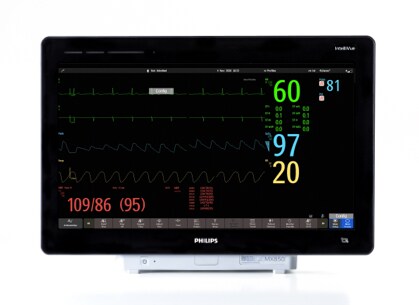
Reference standard algorithms
IntelliVue monitors offer two algorithm reference settings, Auscultatory and Invasive. Both algorithms conform to ISO 81060-2 and correspond to a traditional method of measuring blood pressure. Configuration of the NIBP reference on Philips monitors is a clinical decision that should be made by clinical leadership at the clinical facility.

Educational video: Proper NIBP measurement using Philips IntelliVue patient monitors
An overview of non-invasive blood pressure measurement using Philips IntelliVue patient monitors, including measurement references, monitor configuration, pre-measurement bedside and patient setup; and measurement taking.
IntelliVue Instructions for Use
Detailed information on IntelliVue monitor configuration and patient set up for NIBP measurement can be found in the device Instructions for Use (IFU).
For additional information or questions, contact your local Philips representative.
Frequently asked questions
Featured products
-
IntelliVue MX850
The IntelliVue MX850, with its multi-display and multi-user capabilities, is built for the highest-acuity patients and the most demanding interventions, such as cardiothoracic or transplant surgery. Featuring direct access to the hospital applications via HTML5, Citrix, and optional integrated PC, the monitor is also designed to support cybersecurity features such as node authentication, network data encryption, print report encryption and device data encryption, and includes a built-in RFID/NFC card reader.
866470 -
IntelliVue X3
The Philips IntelliVue X3 is a compact, dual-purpose, transport patient monitor featuring intuitive smartphone-style operation and offering a scalable set of clinical measurements.
867030 -
IntelliVue MX450
The IntelliVue MX450 patient monitor combines powerful monitoring with flexible portability in one compact unit. Supplying comprehensive patient information at a glance, it can make a real difference when multiple patients and priorities need attention.
866062
References
1Turan et al. Anesthesiology 2019 2Hypertension. 2019;73"e35-e66 3Branko G Celler et al 2017 Physiol. Meas. 38 1006 4Barbara McLean; Comparing Blood Pressure Measures: Does One Measurement Equal Another?. Crit Care Nurse 1 February 2015; 35 (1): 75–81. doi: https://doi.org/10.4037/ccn2015557

